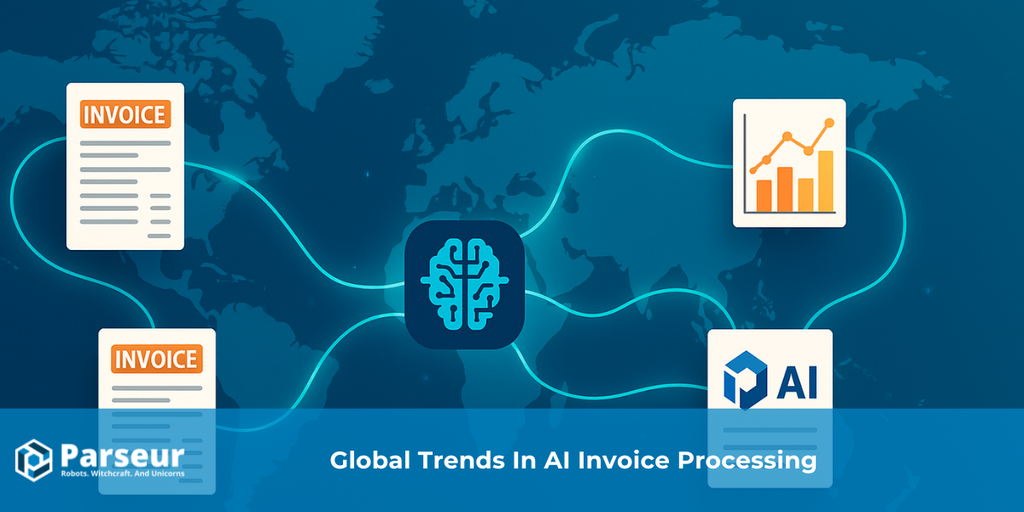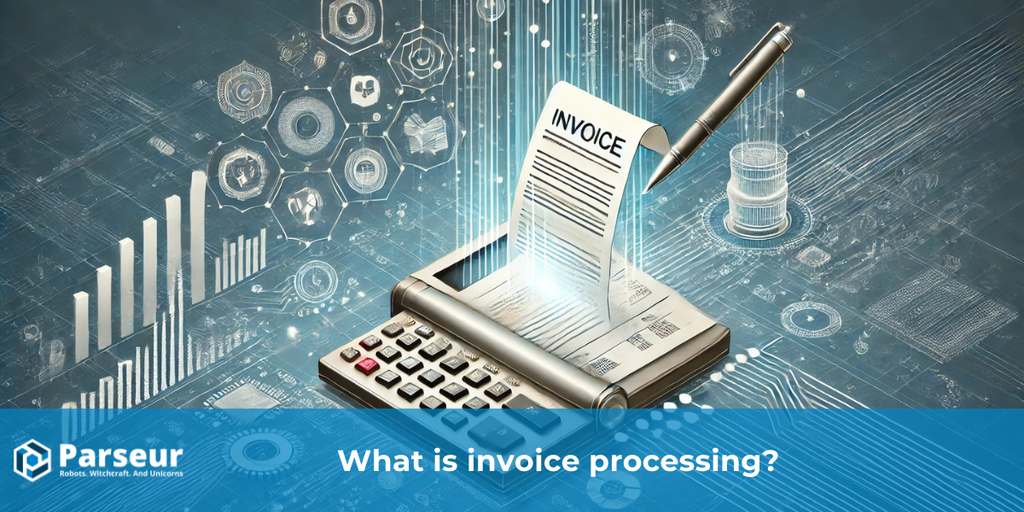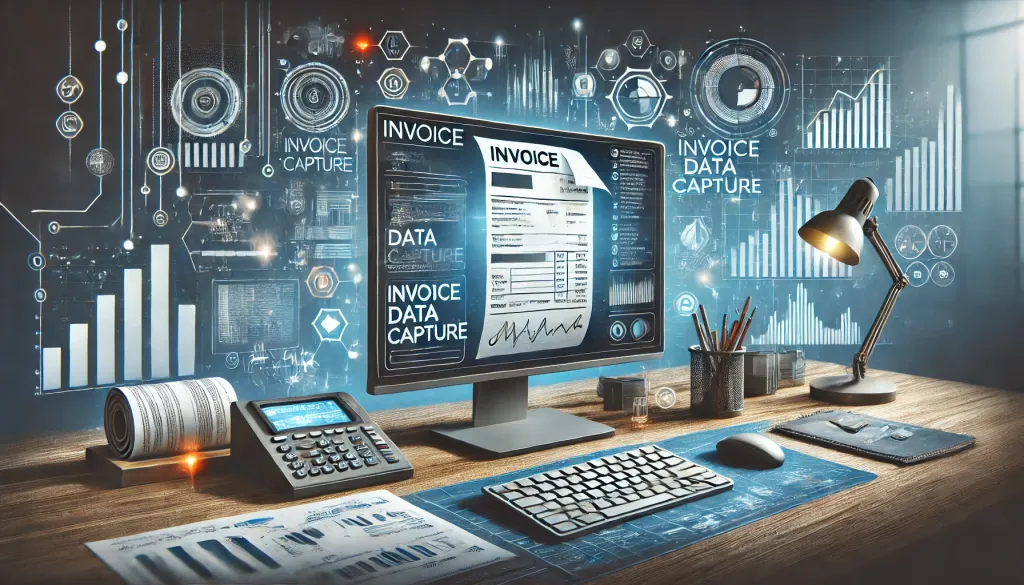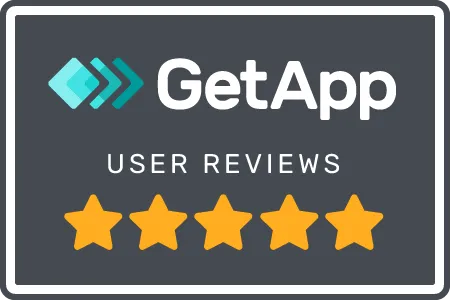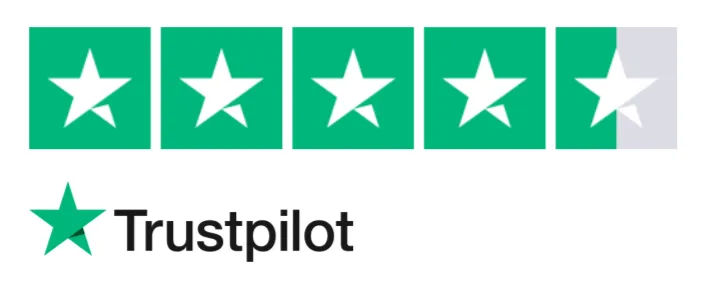Key Takeaways
- AI invoice processing cuts costs to about $2.36 per invoice.
- Processing speed jumps manually from 10–30 minutes to 1–2 seconds with AI.
- Accuracy boosts give the highest ROI by avoiding costly errors.
- Parseur meets or exceeds benchmarks with fast setup and seamless integrations.
If you’re researching AI invoice processing tools, you’ve probably seen vendors throw bold claims such as “Process invoices in seconds!” “Cut your costs by 90%!”
Yet without independent benchmarks, knowing what’s hype and reality is hard. In this guide, we’ve compiled benchmark data from reputable, independent research organizations to give you a clear, unbiased view of AI invoice processing performance in 2026 and how to use this data to choose the right solution for your accounts payable automation.
Why Benchmarks Matter In AI Invoice Processing
When businesses shop for AI invoice processing software, three numbers matter most: accuracy, processing speed, and cost per invoice. These aren’t just vanity metrics; they directly impact your bottom line and trust in your automation platform.
The challenge? Many vendors present glowing stats without context or consistent measurement standards. Claims that sound impressive can be misleading without knowing the document complexity, sample size, or how accuracy was calculated, making them little more than marketing fluff.
That’s why independent benchmarks are so valuable. They give you a real-world, side-by-side view of how solutions stack up under the same conditions so that you can make a decision based on facts, not just promises.
With clear benchmarks, you can cut through the noise, understand the ROI, and identify solutions like Parseur that consistently meet or exceed industry standards for invoice OCR benchmarks and invoice automation accuracy.
How These Benchmarks Were Reported
When discussing AI invoice processing benchmarks, we’re not pulling numbers from a single marketing brochure.
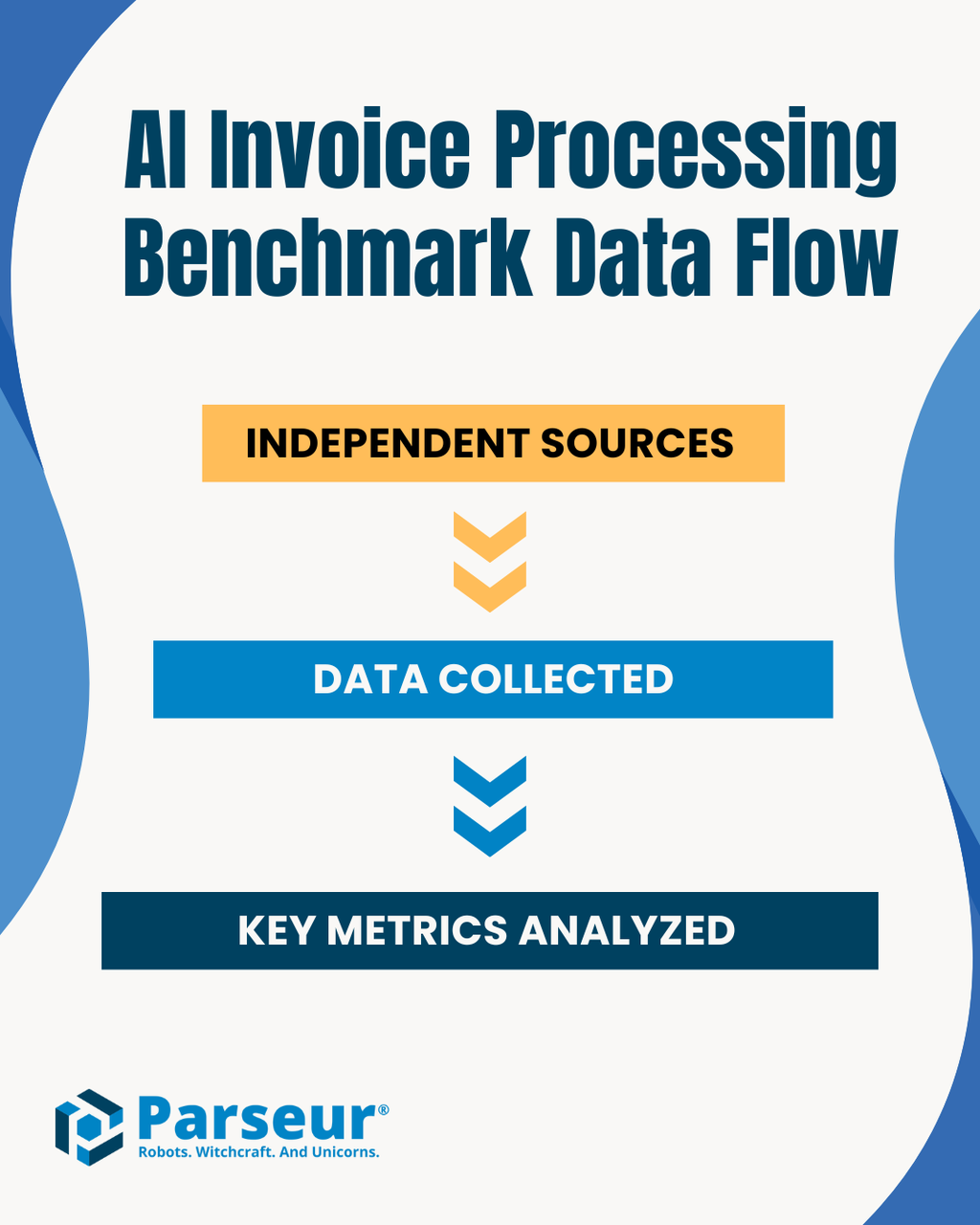
The data here is aggregated from trusted, independent research firms and industry bodies, including:
APQC (Accounts Payable Benchmarks)
- Known for detailed process benchmarking across finance operations.
- APQC also offers interactive dashboards and up-to-date data on AP performance across industries.
Ardent Partners
- Specializes in AP automation market research and adoption trends.
- Processing cost (2025 Best-in-Class): $2.78 per invoice versus $12.88 for others.
- Processing time: 3.1 days for Best-in-Class AP teams compared to 17.4 days for the rest.
- Exception rate: 9% for top performers versus 22% for all others.
Deloitte
- Publishes cost, efficiency, and ROI data for enterprise AP solutions.
- Cost per supplier payment: Nearly $8 on average, with 62% attributed to manual labor.
- Error rate: Payment error rates range from 0.1% to 0.4%** of total supplier disbursements.
- Touchless processing impact: Deloitte’s partnership with Basware enables enterprises to achieve up to 89% touchless invoice processing.
Gartner
- Tracks technology performance, adoption, and total cost of ownership.
- Accuracy improvement via ML: Machine-learning parsing of machine-readable documents can raise accuracy into the high-90% range.
AIIM (Association for Intelligent Information Management)
- Focuses on document management and intelligent capture statistics.
- Data capture methods: In one survey by Quandary, 34% of businesses still process invoice data manually, while only 17% capture data automatically in full.
How they measure:
- Sample sizes: Typically 200–1,000+ AP teams, spanning SMB to enterprise.
- Invoice types: Structured (PDF, XML) and semi-structured (scanned images, emailed invoices).
- Verification methods: Accuracy is often calculated after a human validation, ensuring reported figures reflect usable, ready-to-post data.
- Processing speed: Timed from document arrival to validated, extracted data in the ERP.
- Cost per invoice: Includes software licensing, infrastructure, and labor for exception handling.
This approach ensures the benchmarks you see are grounded in reality, not vendor spin, giving buyers a trustworthy basis for evaluating invoice OCR benchmarks and AP automation cost.
Industry Benchmarks: Accuracy, Speed, Cost, Automation, And Productivity
Evaluating AI invoice processing means looking beyond surface-level claims to complex numbers that reveal actual performance. Accuracy, processing speed, cost per invoice, automation efficiency, and overall productivity are the five key benchmarks that help organizations compare solutions and set realistic expectations.

Independent studies from leading industry sources provide a clear picture of how modern AI-driven systems stack up against manual and traditional rule-based approaches.
Accuracy (according to Lleverage)
- OCR-only systems (85–95% accuracy) – Works well on clean, structured invoices but often falters with inconsistent layouts, unusual fonts, or low-quality scans, requiring frequent manual corrections.
- AI + Machine Learning models (≈99% accuracy) – Continuously learns from new layouts and document variations, maintaining top-tier accuracy without needing constant template rebuilding.
Speed (according to SuperAGI)
- Manual data entry: Manual processing times are benchmarked at 10 to 30 minutes per invoice.
- AI automation: AI-driven systems can process invoices in as little as 1–2 seconds per document, dramatically accelerating throughput compared to manual or rule-based methods
Cost
- Manual processing: The average cost to process an invoice manually in 2025 starts at $12.88 and until about $19.83 per invoice, depending on company size and process complexity.
- AI-powered AP automation: Processing an invoice electronically costs as little as $2.36 per invoice, according to Ascend.
AI Automation & Productivity
- Automation isn’t just about cutting costs; it also transforms invoice processing speed. Industry benchmarks show that automating accounts payable can reduce processing costs by up to 80% and shrink cycle time by similar margins, delivering tangible ROI and faster month-end close, according to Zipdo.
- Fully automated AP workflows can process an average of 30 invoices per hour, compared to only five handled manually, a 70 to 80% improvement in throughput, as stated by Quadient.
- According to Quadient, beyond speed, automation drives significant productivity gains. Roughly 95% of companies using AP automation report that it improves tedious, repetitive tasks, freeing finance teams to focus on more strategic priorities.
- Labor costs can drop by as much as 75% when manual data entry is eliminated, enabling organizations to reallocate skilled staff toward higher-value functions like cash flow analysis, supplier negotiations, and compliance management, according to Highradius.
These figures show why more finance teams are looking to AI invoice processing to combine precision, speed, and operational efficiency. The difference between manual and AI-driven approaches is not just marginal; it can mean faster closes, lower costs, fewer errors, and more time for strategic work that drives business growth.
How Parseur Fits Within These Benchmarks?
While benchmarks give you the big picture, your results depend on how well your AI invoice processing tool handles real-world complexity. Parseur is built to meet and often exceed top-tier ranges in accuracy, speed, and cost by combining smart automation with flexible workflows.
Manual data entry costs businesses an average of $28,500 per employee annually, highlighting an urgent need for automation. - Parseur, Manual Data Entry Report 2026
What makes it possible:
- AI OCR tuned for real invoices – Handles diverse formats, multi-page documents, and variable layouts without constant template rebuilding.
- Automated field extraction + data validation – Ensures the right data lands in the right field, even when suppliers change their invoice design.
- Direct integrations – Push structured data seamlessly into your accounting, ERP, or AP automation platform, removing the risk of manual re-entry errors.
With Parseur, you’re not just hitting the invoice automation accuracy benchmarks but building a reliable process as your volume and complexity grow.
Key Insights From The Data
The numbers tell a clear story: AI invoice processing delivers real gains only when implemented strategically.
- Accuracy is the multiplier. Jumping from 85% to 99% accuracy doesn’t just cut corrections; it amplifies every downstream automation, from payment scheduling to compliance.
- Speed without accuracy is a false economy. Processing an invoice in 10 seconds is useless if half need manual review. Top performers balance both.
- Cost savings compound with scale. Moving from $12 per invoice to $2 isn’t just an 83% reduction for companies processing tens of thousands of invoices; it’s a budget game-changer.
The takeaway: the best AP automation results come from pairing invoice OCR benchmarks with workflow design that sustains speed and precision.
How To Use Benchmarks When Selecting A Tool
Benchmarks aren’t just industry trivia but a shortcut to spotting whether a solution will deliver. Here’s a quick checklist when evaluating AI invoice processing software:
- Accuracy: Consistently achieves >95% on varied invoice formats.
- Speed: Processes each invoice in seconds, not minutes.
- Cost Savings: Cuts your cost per invoice by 80% or more compared to manual handling.
- Integrations: Connects seamlessly to your ERP or accounting platform to avoid re-entry errors.
Choosing the right AI invoice processing tool isn’t about chasing the biggest number on a brochure. It’s about finding a highly accurate, scalable solution that seamlessly integrates into your workflow without hidden costs.
If you want a platform that consistently meets top-tier invoice OCR benchmarks and does it without the complexity of heavy enterprise AI, Parseur is built for you.
Start your free trial today and see how fast, accurate, and cost-effective invoice automation can be.
Frequently Asked Questions
If you’re exploring AI-powered invoice processing or AP automation, you probably have questions about accuracy, costs, and how the technology compares to traditional OCR. This FAQ brings together clear, straightforward answers so you can quickly understand the benefits, limitations, and key considerations before choosing a solution.
-
Does OCR-only invoice processing still work for AP automation?
-
OCR-only systems can achieve 85–95% accuracy but often struggle with inconsistent layouts or poor scans, requiring more manual corrections than AI-driven models.
-
What accuracy should I expect from AI + Machine Learning invoice tools?
-
Modern AI + ML models, like those benchmarked by Lleverage, reach ≈99% accuracy and adapt automatically to layout changes without template rebuilding.
-
How much can AI-powered AP automation reduce costs?
-
Processing an invoice electronically costs as little as $2.36 per invoice, more than an 80% reduction from manual costs.
-
Why are independent benchmarks more reliable than vendor claims?
-
They use standardized measurement methods across multiple vendors, making comparisons fair and rooted in real-world conditions rather than marketing spin.
-
How does Parseur compare to other invoice processing tools?
-
Parseur consistently meets or exceeds top-tier benchmarks for accuracy, speed, and cost, while offering flexible workflows and direct integrations to reduce manual errors.
-
Which industries benefit most from AI invoice processing?
-
High-volume, document-heavy sectors like logistics, retail, manufacturing, and professional services see the biggest ROI from speed, accuracy, and cost savings.
-
Can AI handle multi-page and variable-format invoices?
-
Yes, platforms like Parseur are designed to parse multi-page documents and adapt to changing layouts without frequent template updates.
-
What should I check before selecting an AI invoice processing tool?
-
Look for >95% accuracy on varied invoices, processing in seconds, cost savings 80%+, and seamless integration with your ERP or accounting system.
Last updated on

